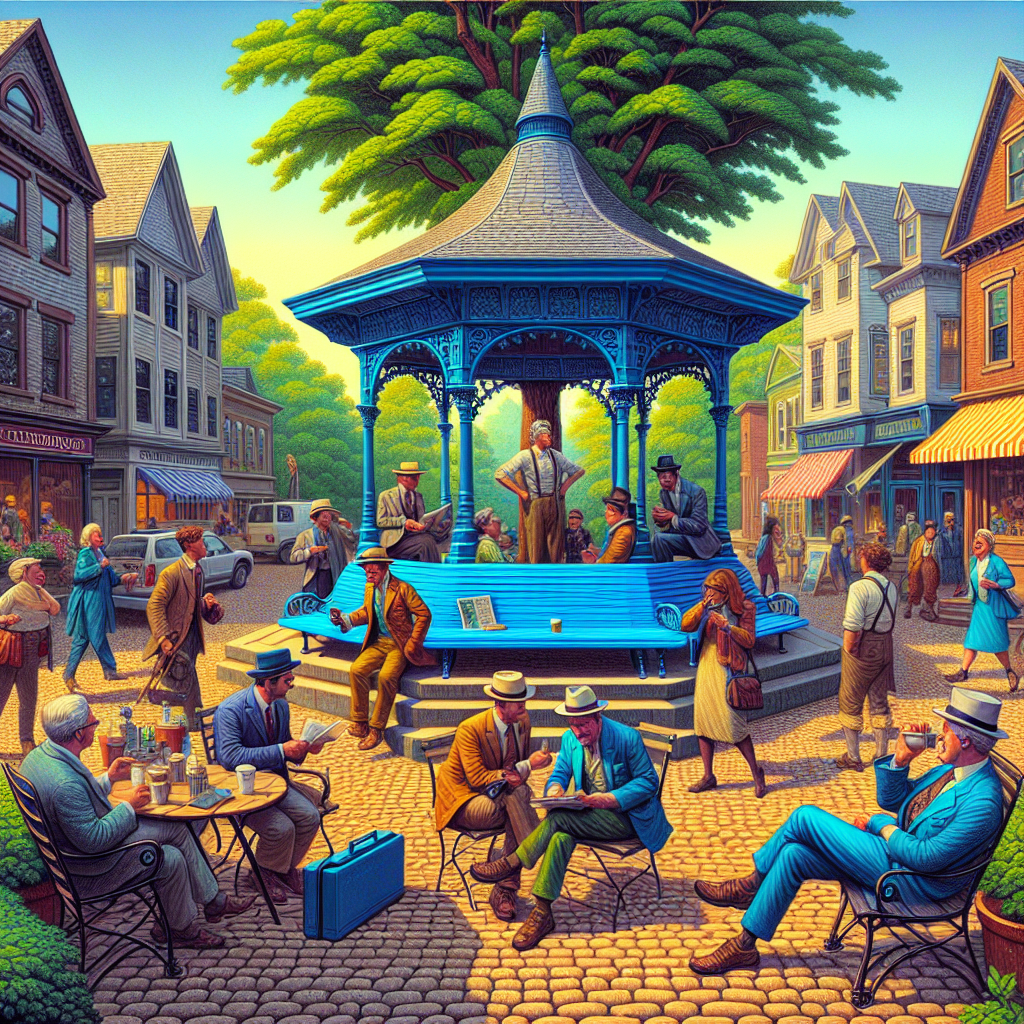**"The Cobalt Controversy: Color, Community, and Conflict in Chesterburgh’s Central Park"**

“He who has a why to live can bear almost any how.” — Friedrich Nietzsche
In the unassuming folds of Chesterburgh’s cobblestone streets lies a quiet tempest, not of politics or local elections, but rather something more philosophically vexing — a dispute over the proper coloration of the newly installed benches in Central Park. What might seem at first glance a trivial quarrel over paint hues has, upon closer inspection, revealed itself as a microcosm of broader tensions circling our community’s identity, public space, and the ethics of apparently mundane municipal decisions.
Last week, the Chesterburgh Town Council unveiled what they proudly termed the “Central Park Renewal Project.” The initiative sought to replace the ancient, splintered benches—an eyesore, the mayor contended—with modern, ergonomically designed seating. The catch? These benches are painted not in the traditional dark green befitting our sylvan surroundings but rather a vivid shade of cobalt blue. This choice, it turns out, is not universally applauded.
Enter stage left: The Chesterburgh Preservation Society, a local group whose modus operandi is, in general, to safeguard our town’s aesthetic heritage. Led by the indefatigable Mrs. Gloria Penhallow, a septuagenarian with a pedigree that includes a degree in Art History and a decades-long obsession with the Victorian era, the society issued an immediate open letter decrying the “color affront.” They argued persuasively that the cobalt blue disrupts the subtle harmony with the park’s verdant landscape, jarred against the backdrop of our neo-gothic gazebo and the age-old oaks that preside like watchful sentinels.
But why, you might ask—beyond preferences for color palettes—should an intellectual concern about benches warrant such a fuss? Here lies Chesterburgh’s paradox, our very own Gordian knot: the intersection of utility, symbolism, and democratic voice. The choice of color, ostensibly aesthetic, is imbued with deeper ideological undercurrents about what public space is and whom it serves.
The cobalt champions, for their part, cite innovation and inclusion. Councilman Ramirez, the initiative’s sponsor, stated at the last public forum, “The cobalt blue benches are a statement. They signify a break from Chesterburgh’s staid past and an embrace of a more vibrant and progressive future. We want our park to reflect a community unafraid to live chromatically.” He also pointed to a modest survey conducted online, where approximately 62% of respondents favored the new color, though the demographic skew toward younger, tech-savvy residents hardly captures the town’s full spectrum.
But what is the philosophical significance of paint color? Within the framework of phenomenology, put forth by Husserl and later Heidegger, one might consider how our lived experience of place shapes our very being-in-the-world. The benches, while static objects, function as liminal points of connection—between individual and community, rest and reflection, nature and constructed environment. Their coloration colors not merely their physical surfaces but the felt atmosphere of Central Park as a communal locus.
Moreover, at the ethical core is a question of authority: Who possesses the right to decide the aesthetics of common spaces? Is it the appointed officials, armed with efficiency and progress, or the citizenry, guardian of tradition and collective memory? This dilemma is manifest in the ensuing “color war,” which quickly spilled from council chambers into the town’s coffee shops, social media threads, and even the local library’s bulletin boards.
Speaking of coffee shops, it is impossible not to note the irony that Chesterburgh’s beloved Brew & Quill—where the annual tipping
